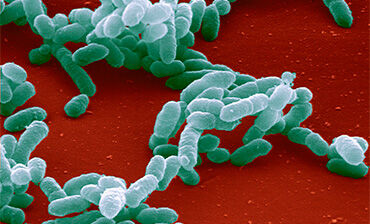Invasive Haemophilus influenzae disease

Invasive Haemophilus influenzae is a bacterium that can cause serious bacterial infections, particularly in the case of the type B strain, that affects both children and adults, with young children being most at risk.
The bacteria can cause a number of serious conditions including meningitis, septicemia, pneumonia, and epiglotitis. The bacteria remains the leading cause of meningitis deaths in unvaccinated people around the world.
Key facts
Risk for people
Invasive Haemophilus influenzae disease affects children and adults. Young children are most at risk of developing serious complications. The disease has six different strains from type A to type F. . Even with quick antibiotic treatment, up to 10% of cases can be deadly.
Haemophilus influenzae type B can lead to the following health problems:
- meningitis
- pneumonia
- blood infection
- swollen epiglottis
- painful joint infection
- skin infection
- ear infection
- heart lining infection
- less common but serious infections like heart valve infection (endocarditis), bone infection (osteomyelitis) or abdominal lining infection (peritonitis)
To date, Haemophilus influenzae type B is the leading cause of meningitis mortality in non-immunised populations. It has a mortality rate of 5% in industrialised countries and can reach 40% in developing countries.
In those who survive, 10-15% will develop severe long-term effects including cerebral palsy, epilepsy, blindness and deafness. A further 20% will develop less severe long-term effects such as learning and behavioural difficulties and speech and language problems.
How it spreads
Person-to-person transmission occurs through respiratory droplets from an infected person, but can also occur through respiratory secretions such as mucus. Only humans can carry and spread the disease.
Although the incubation period of the disease is unknown, people usually develop the disease within seven days of contact with an infected person.
Vaccination and treatment
A safe and effective Hib vaccine has been available since the 1980s and all EU/EEA countries include this vaccine in their routine childhood immunisation programmes. Vaccination has significantly reduced the rate of rate of the disease and has practically eliminated meningitis caused by the bacteria in infants and young children.
All children are recommended to receive the Hib vaccine before they are six months old and a booster dose when they are one year old.
Treatment for Hib includes antibiotics alongside management of the infection's symptoms. Patients treated with effective intravenous antibiotics are no longer infectious after 24 hours.
Protective measures
People who have been in contact with someone who has been infected may be given antibiotics as a preventive measure to avoid developing the disease.
In schools, if a classmate contracts the disease, families of children who share school with the infected child are advised to go to the doctor if their child is unwell.







